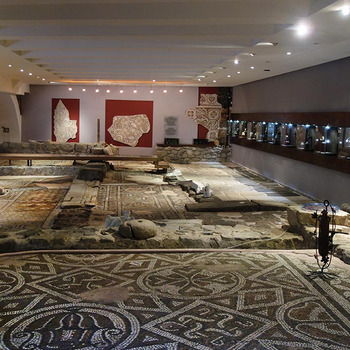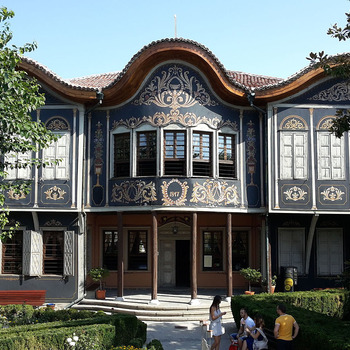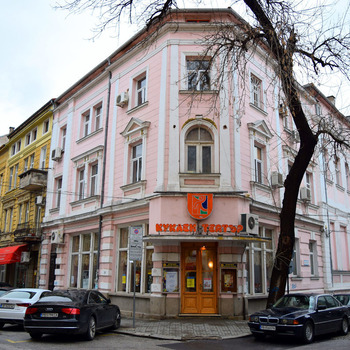Church of St. Petka Old Plovdiv
Overview
"St. Petka Stara" or "St. Paraskeva" is an Orthodox church in the city of Plovdiv, dedicated to the holy martyr Paraskeva. The church is located in the Old Town (Three Hills), next to the "Monday Market".
In its current form, the church was built in 1836 with the patronage of the rich Plovdiv chorbadji Valko Chalakov-Golemi (donated 5,000 groschen). A preserved list of donated amounts (dated March 15, 1837) shows that many Plovdiv residents, Bulgarians from the surrounding villages and towns (Karlovo, Klisura, Koprivshtitsa, Sopot), Metropolitan Nicephorus (with 2000 groshes) and The Bachkovo Monastery (with 400 groschen). A charter issued by Patriarch Gregory VI of Constantinople on September 10, 1836, decreed that the church and the hospital dependent on it be managed exclusively by the parish board, without the intervention of the Metropolitan of Plovdiv.
By 1860 the temple passed into Greek hands due to the predominance of the Greek population in the surrounding part of the city. In connection with this, the veneration of St. Petka is changed in honor of the holy martyr Paraskeva (St. Petka the Roman). In 1864, “the neighborhoods of the New Quarter in the city ... filed a complaint with the authorities [authorities], requesting either the church“ St. Petka "to be given to them to complete the Divine Liturgy in Bulgarian, or to allow their superiors to build a new church."
"St. Paraskeva" became Bulgarian again in 1906, but no longer as a separate parish, but as part of the newly built entirely by Bulgarians larger church "St. Petka". During the expulsion of the Greeks, the entire archive and literature of the temple were burned and valuable information about its history was destroyed.
The temple bell tower rises on the rocks on the slope of Dzhambaz Tepe. Its silhouette is a characteristic part of the panorama of the old town. The bell tower has eight elongated openings, crowned with pointed gables. Above its entrance is an image of Jesus Christ, whose outlines have been erased by time and barely noticeable.
The church itself has an apse, stone walls and a wooden roof without internal supports. The nine images in the royal order of the iconostasis were painted by Zachary Zograf in 1837 and the small icons above them are by artists from the Edirne school, whose most famous representative is Nikola Odrinchanin. The bishop's throne with an inlay of mother-of-pearl and ivory is one of a kind.
There is a holy spring in the temple, which was once known for the fact that its water cured eye diseases, as the believers turned with fervent prayer to St. Paraskeva.
Recommended
- The old town of Plovdiv - an architectural reserve
- Philippopolis Museum-Gallery
- Ancient theater
- Permanent exhibition of Zlatyu Boyadzhiev
- Regional Ethnographic Museum


 Bulgarian
Bulgarian Romanian
Romanian



